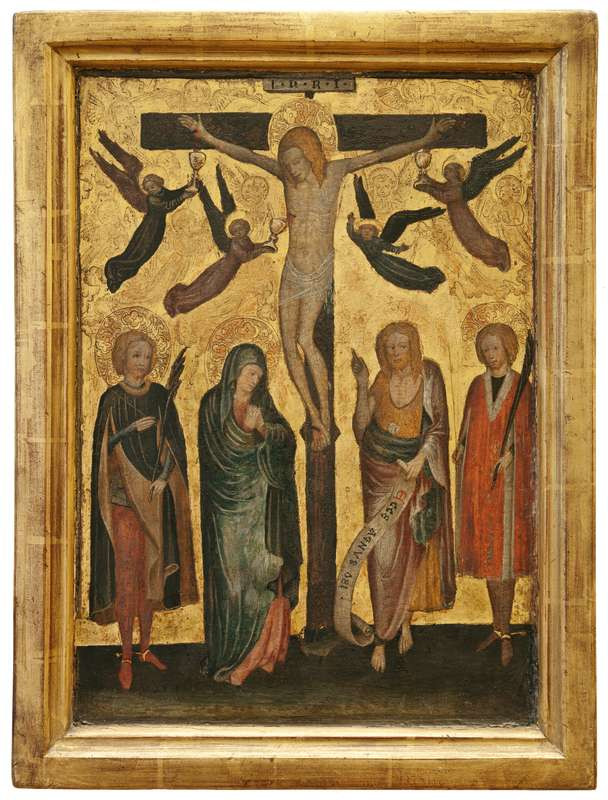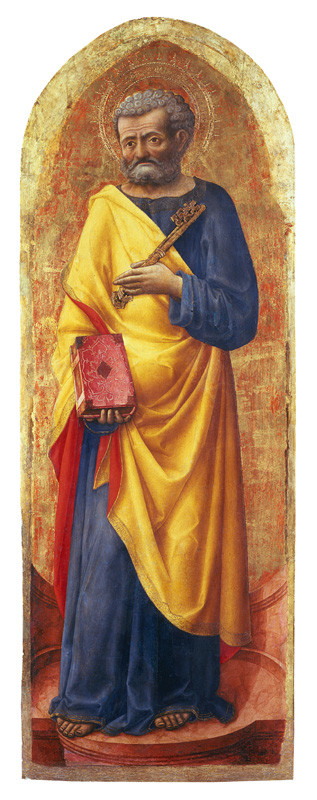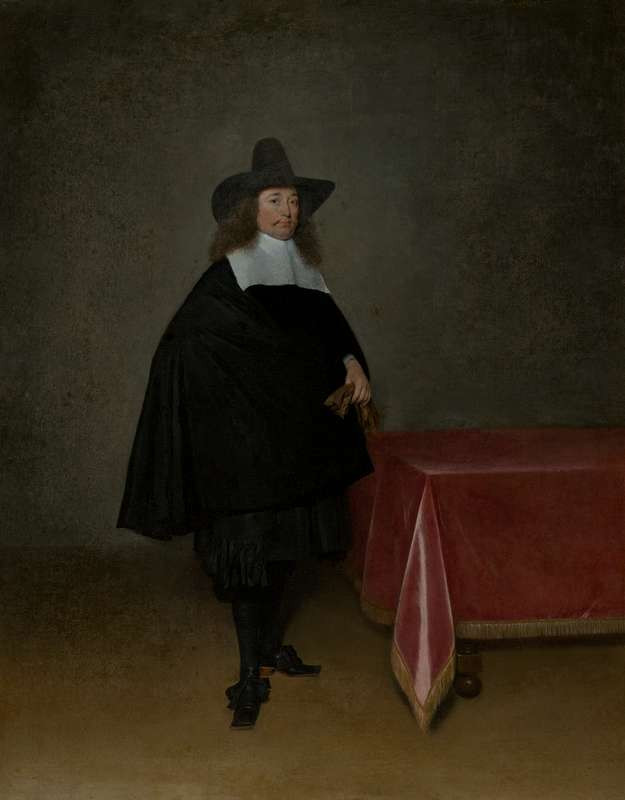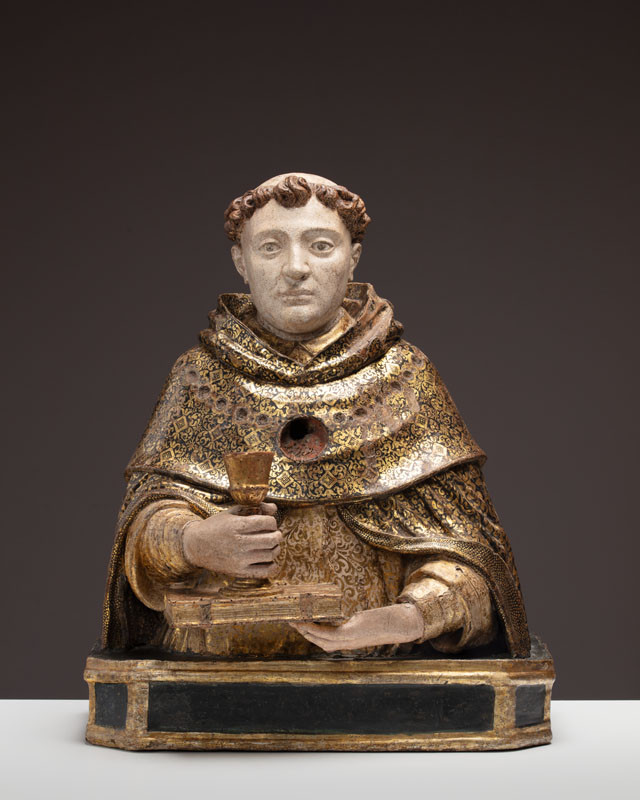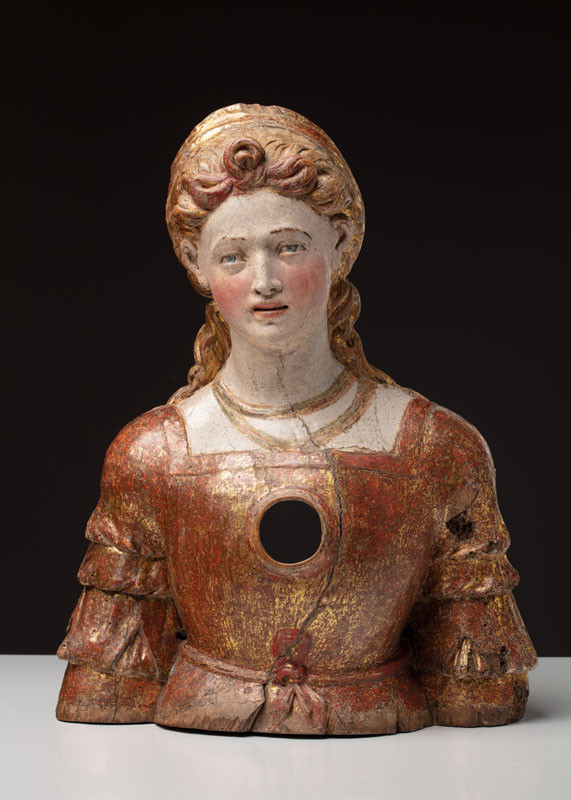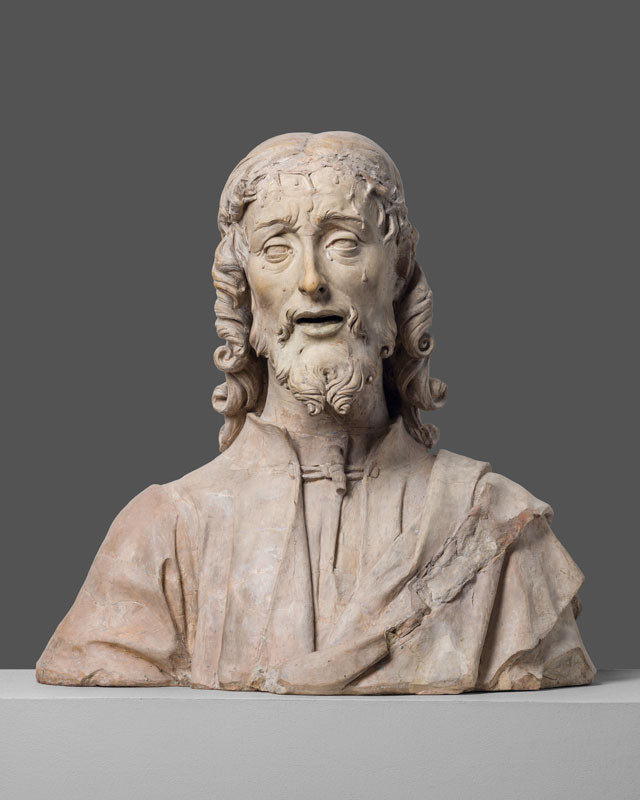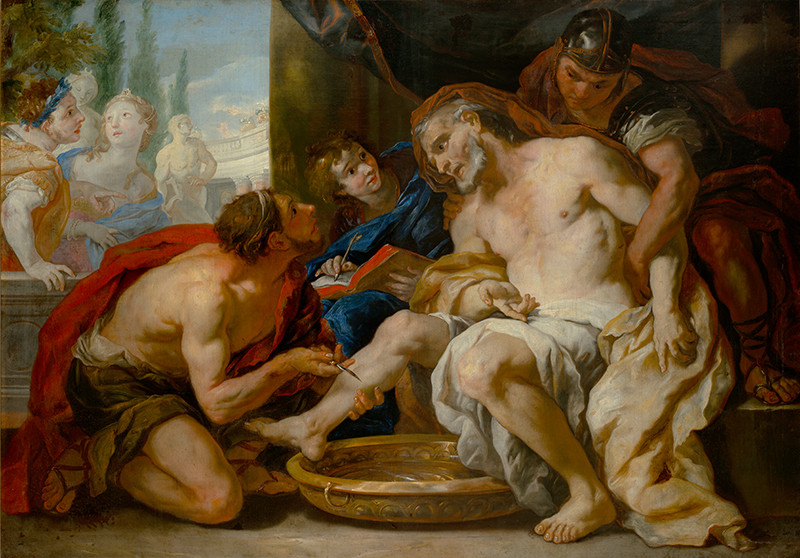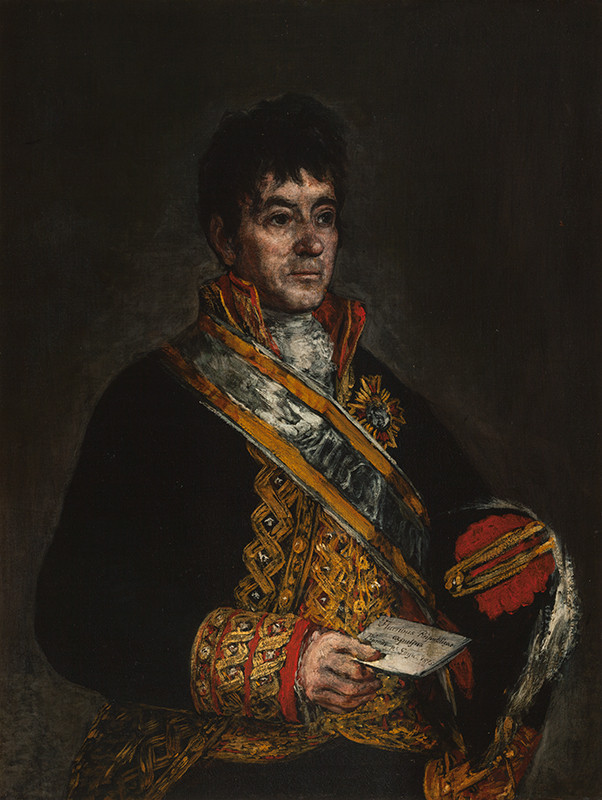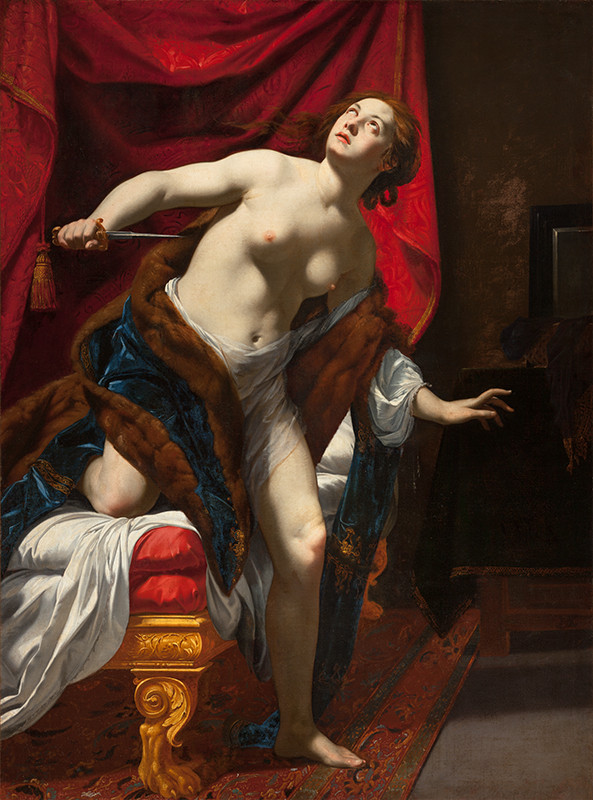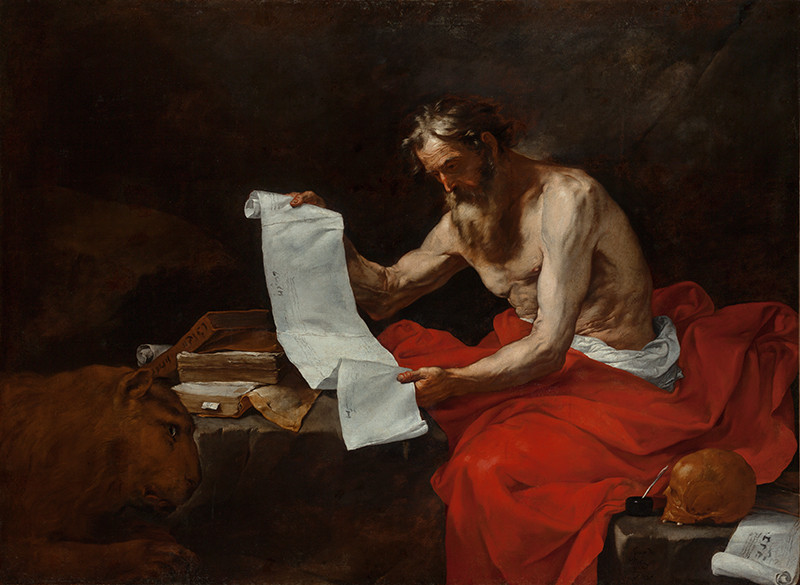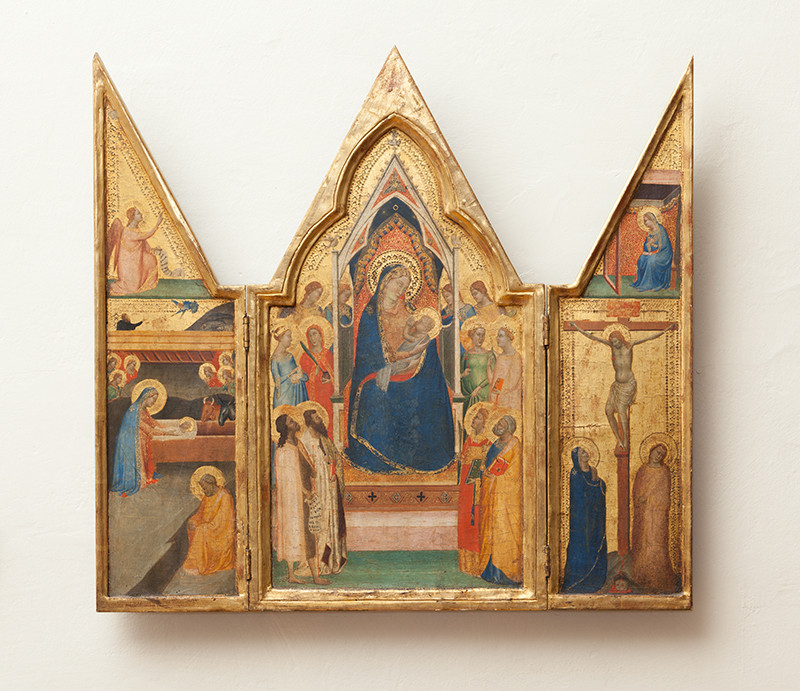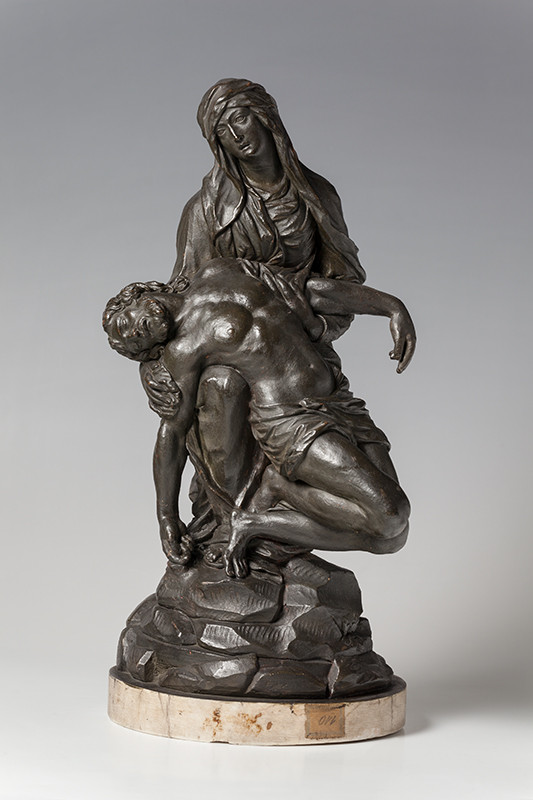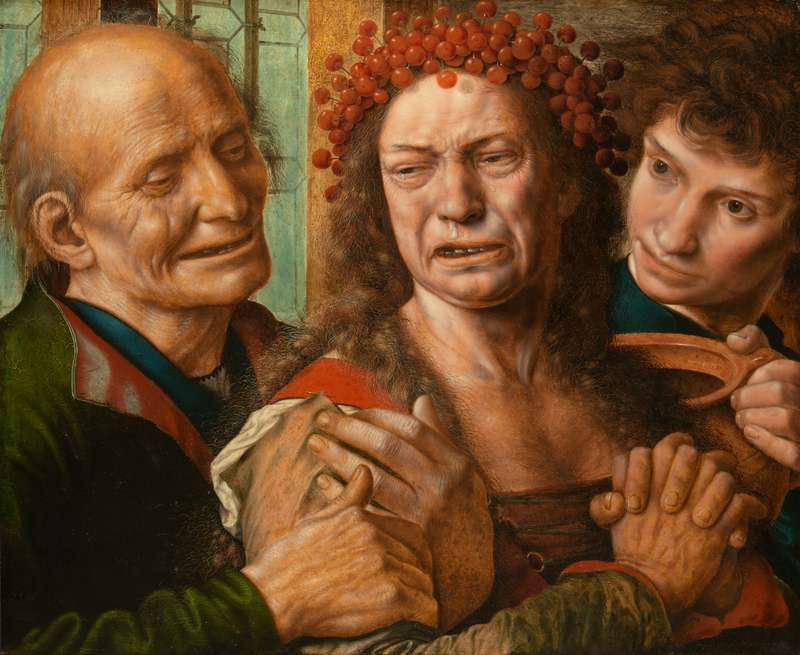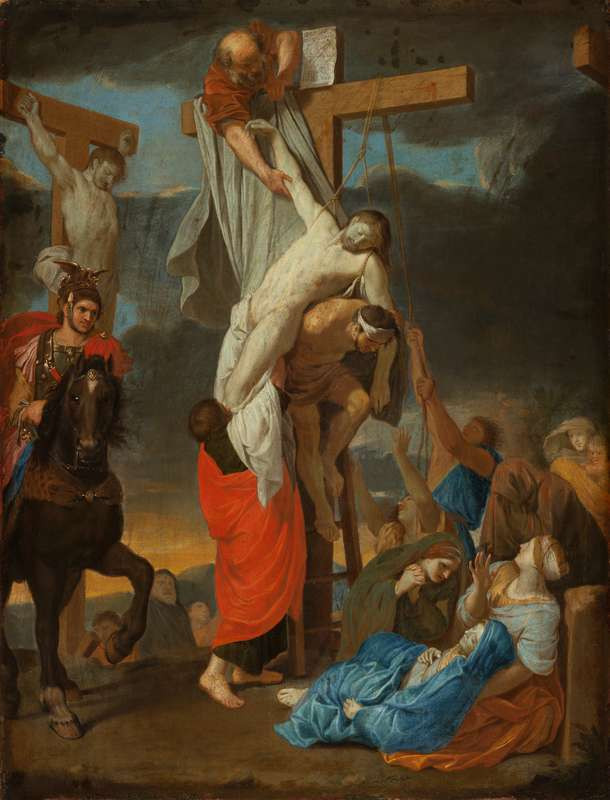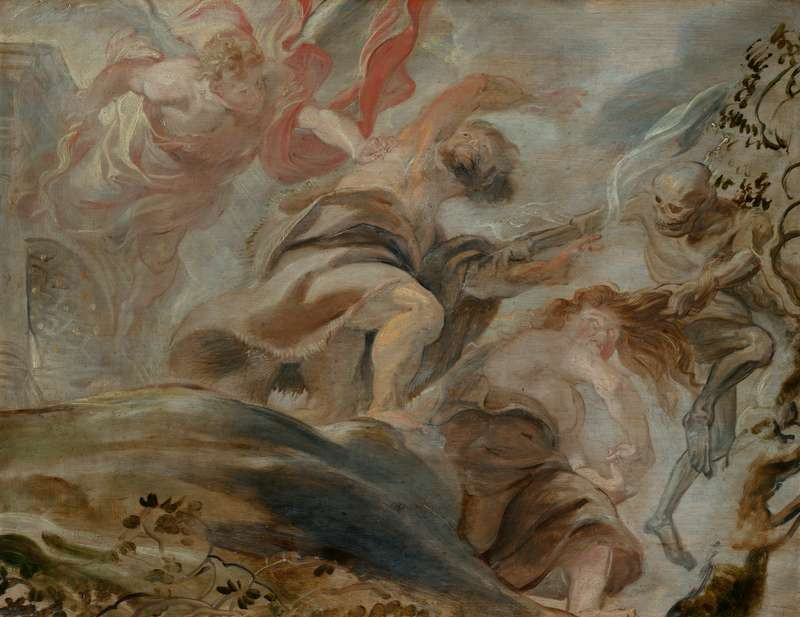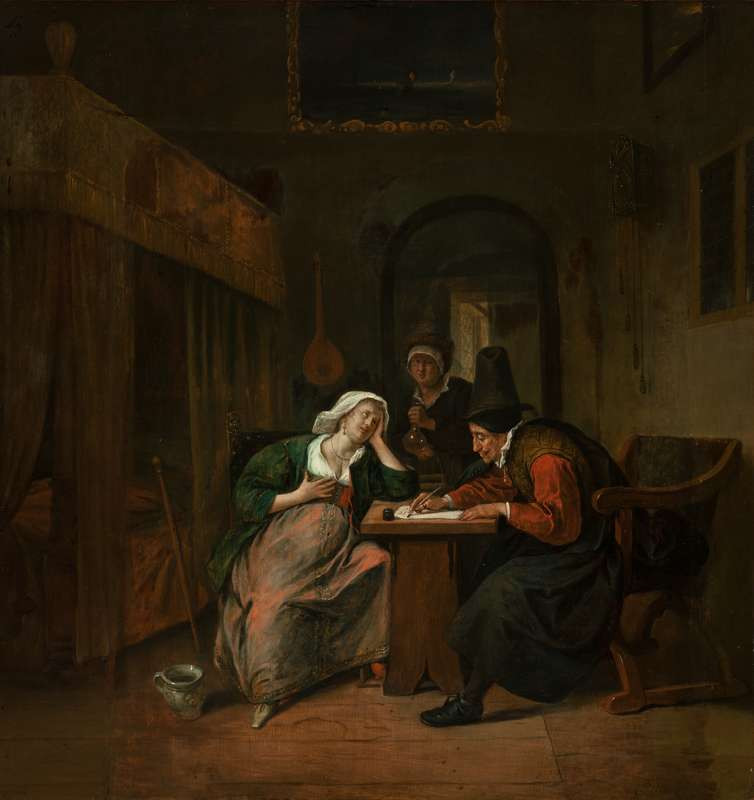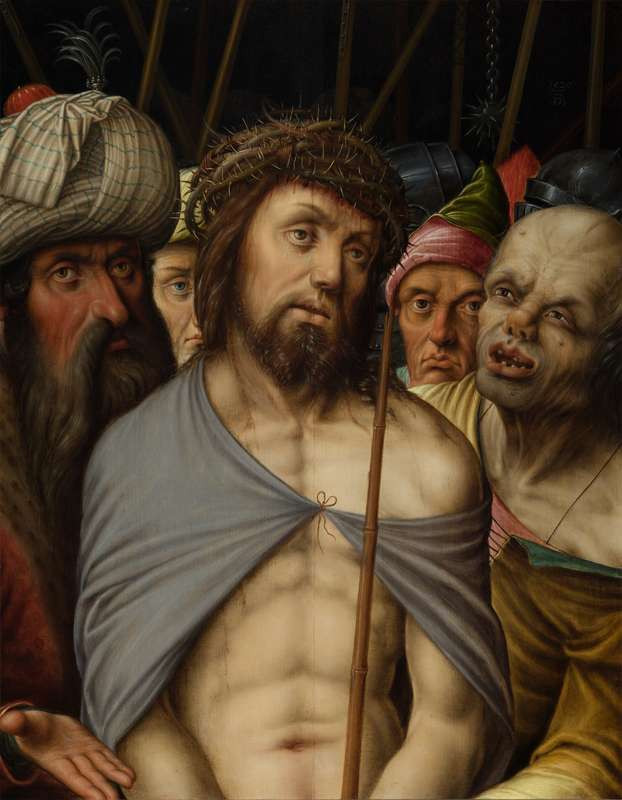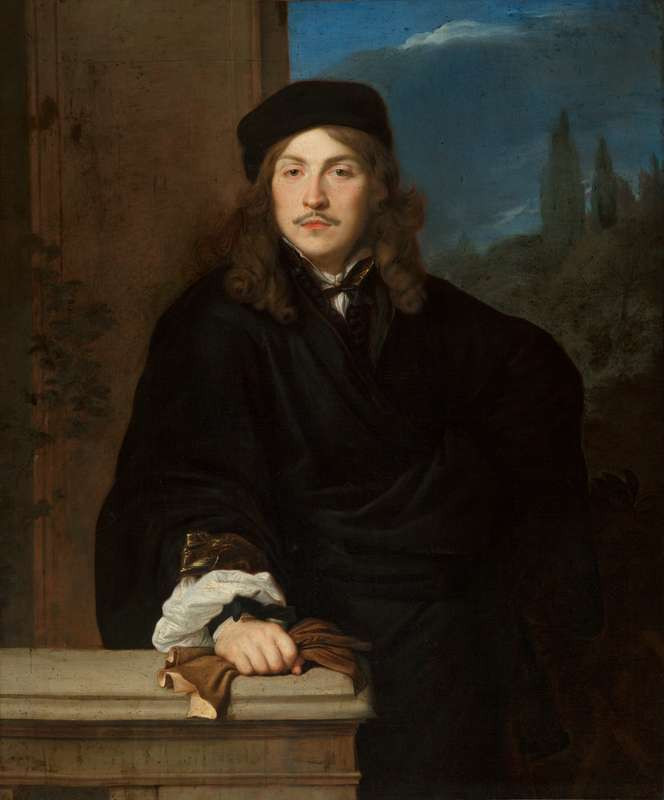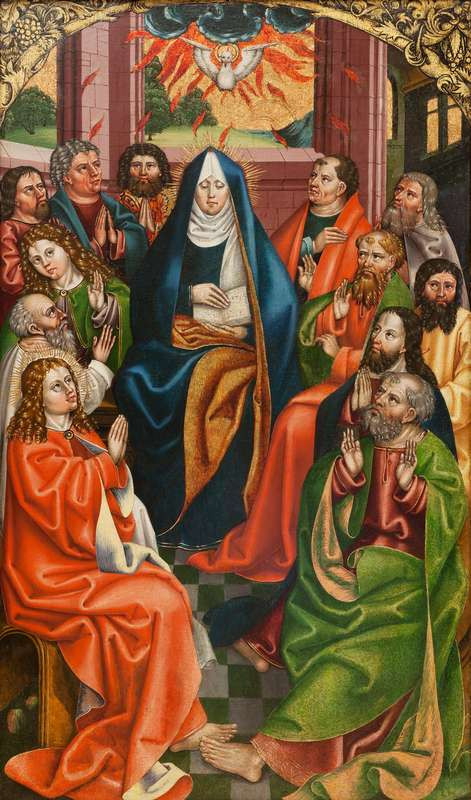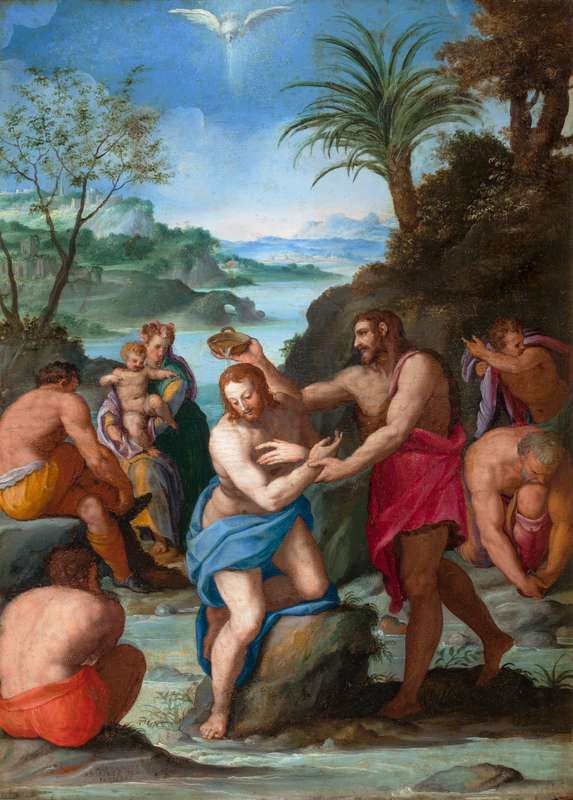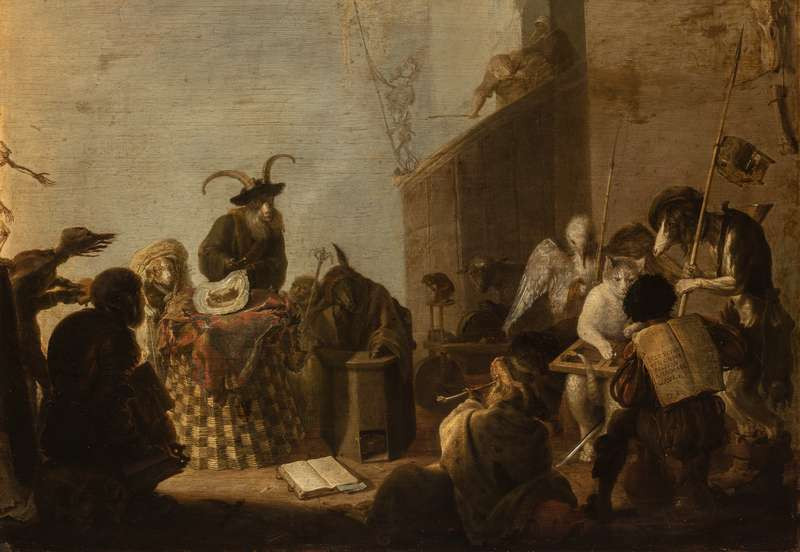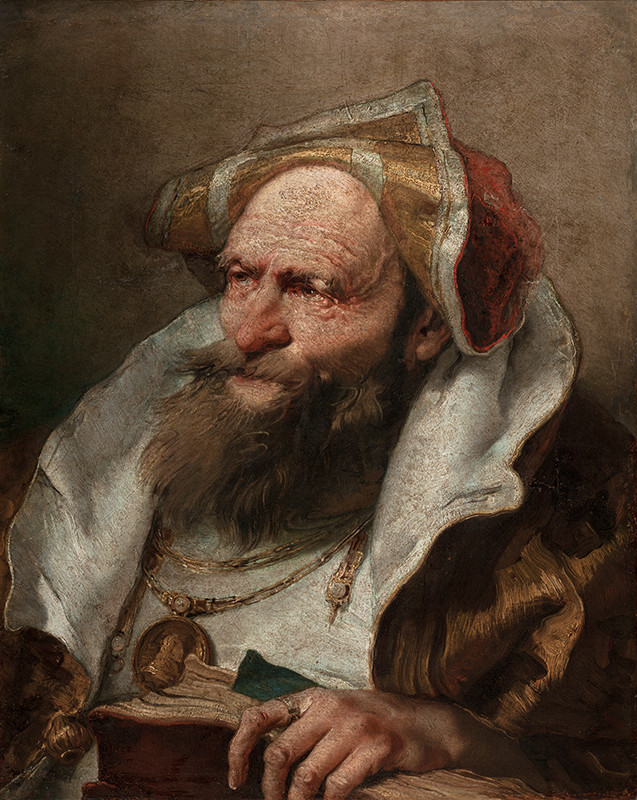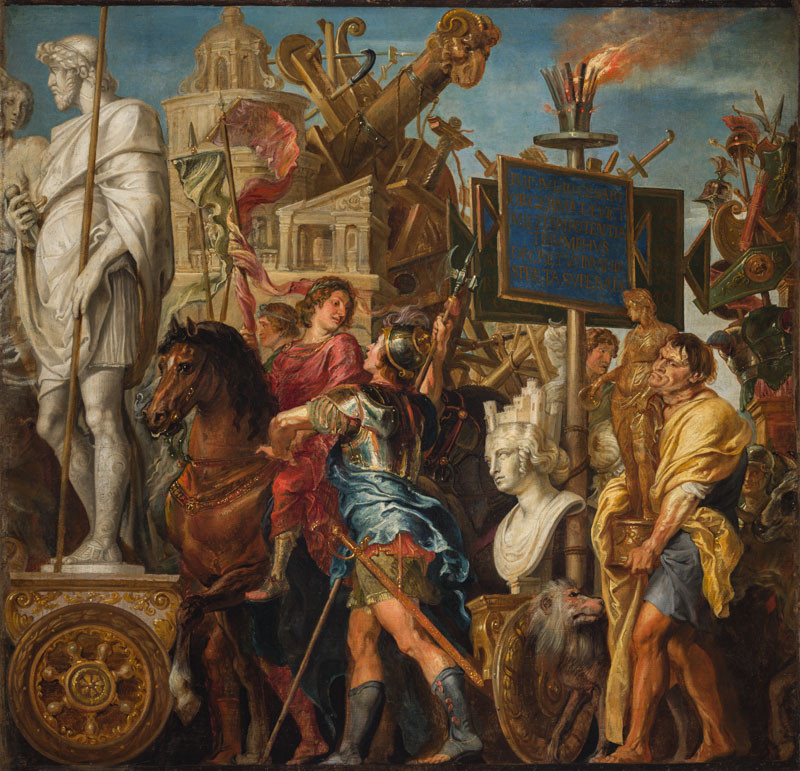
The painting copies in part scenes No II. and No. IX in the famous monumental cycle painted by Andrea Mantegna in the years 1484-1492 for the Count of Mantua, Giovanni Francesco II. Gonzaga. The original canvas was first situated in the San Sebastiano Palace in Mantua. The splendour and spectacular nature of this series captivated even the English King Charles I, who acquired it in 1629 and had it taken to England. Here the paintings found their place in Hampton Court Palace. This cycle, which shows Caesar’s triumphal march after the campaign in Gallia, also attracted the attention of Peter Paul Rubens, who visited Mantua around 1608 when he studied and sketched the paintings. It was probably after his return to Antwerp that Rubens participated in the production of these paintings, completed after his death by Erasmus Quellinus II. The paintings once formed part of the rich Rubens art collection, then from the artist’s legacy the panels of the cycle travelled to Vienna, where acquired by an important collector of Netherlands art. Count František Antonin Berka of Dubá. Later the paintings passed through inheritance to the ownership of the Nostic family, which built a picture gallery in the Nostic Palace in Prague.



